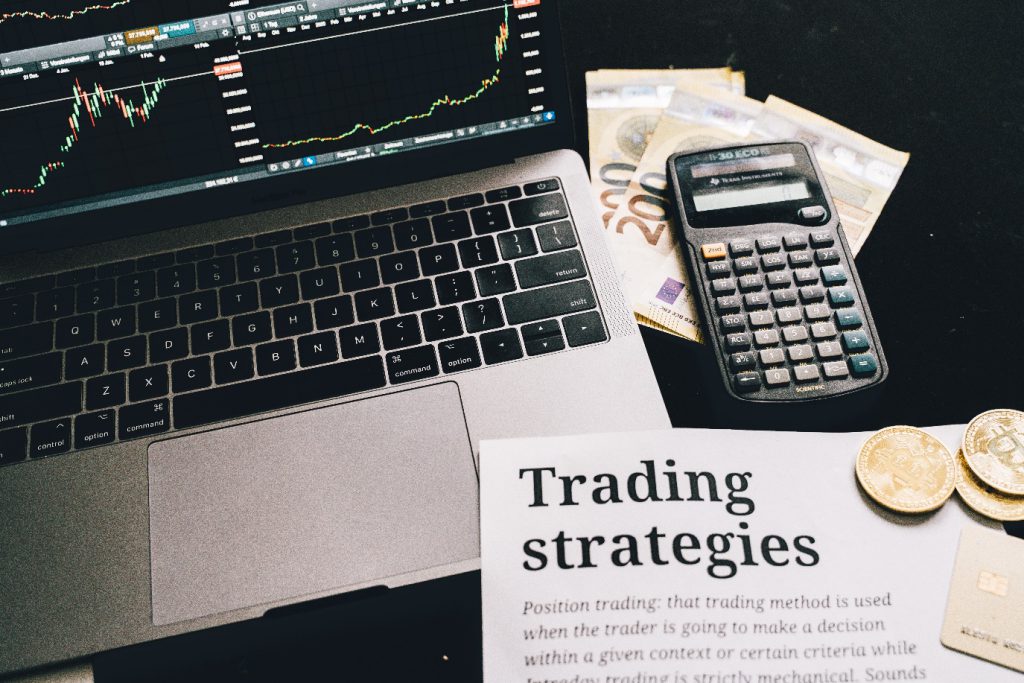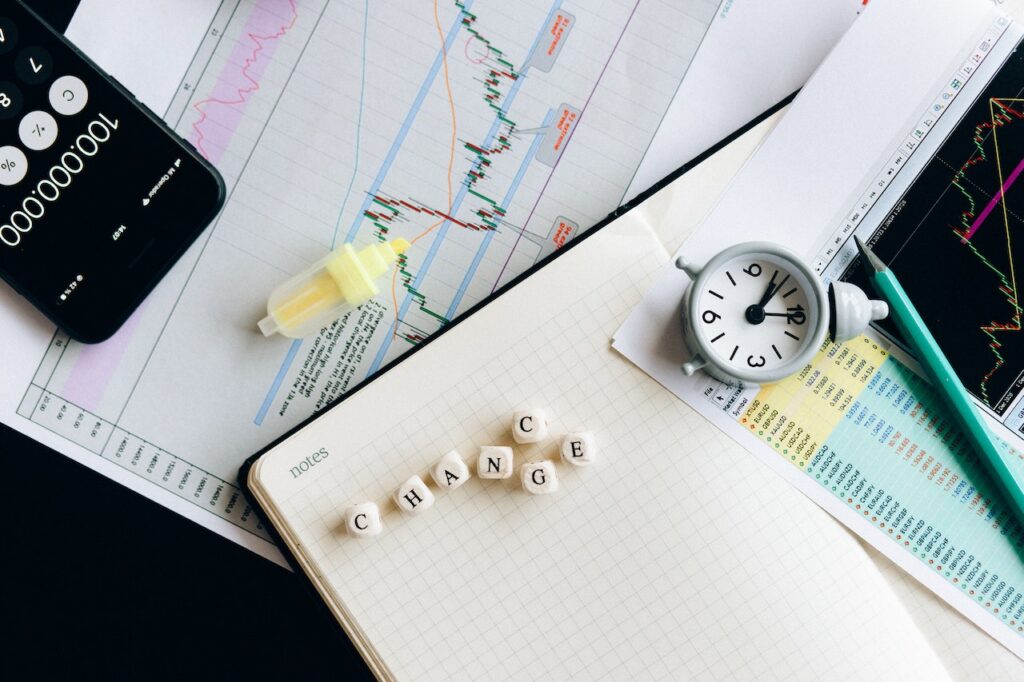Forex trading, the global marketplace for exchanging different currencies, offers immense opportunities to traders to profit from fluctuations in currency prices. However, navigating the forex market can be complex and risky without the right knowledge and strategies. This article aims to provide valuable tips and insights on how to minimize risks and maximize profits in forex trading. From understanding key concepts and terminology to implementing effective risk management strategies, technical and fundamental analysis techniques, and developing a winning trading strategy, we will explore various aspects that can help traders achieve success in the forex market. Additionally, we will delve into the importance of mastering emotions and psychology, selecting the right broker, and continuously learning and adapting to the ever-changing market conditions. By following these forex trading tips, traders can enhance their skills, protect their capital, and optimize their chances of achieving consistent profitability.
1. Understanding the Forex Market: Key Concepts and Terminology
1.1 What is Forex Trading?
Forex trading, short for foreign exchange trading, is the buying and selling of currencies with the aim of making a profit. It is the largest and most liquid financial market in the world, where trillions of dollars are traded daily. The main participants in this market are banks, financial institutions, and individual retail traders like you and me.
1.2 Major Currency Pairs and Crosses
When trading forex, you’ll come across major currency pairs and crosses. Major currency pairs consist of the most widely traded currencies, such as the US dollar (USD), euro (EUR), Japanese yen (JPY), British pound (GBP), Swiss franc (CHF), Canadian dollar (CAD), Australian dollar (AUD), and New Zealand dollar (NZD). Crosses are currency pairs that do not include the US dollar, such as the EUR/JPY or GBP/CHF.
1.3 Market Participants: Banks, Institutions, and Retail Traders
The forex market involves various participants who influence currency prices. Banks and financial institutions, including central banks, play a significant role through their high trading volumes. They often engage in large-scale transactions to meet their own needs or those of their clients. On the other hand, retail traders like you and me access the market through online platforms provided by brokers. While individual retail traders may not have the same financial resources as institutions, they can still take advantage of the market’s opportunities.
2. Risk Management Strategies: Protecting Your Capital
2.1 Importance of Risk Management in Forex Trading
Risk management is crucial when trading forex because it helps protect your capital from significant losses. It involves implementing strategies to control and minimize potential risks. By managing your risk effectively, you increase the chances of long-term profitability.
2.2 Determining Risk Tolerance and Setting Risk-to-Reward Ratios
Before entering any trade, it’s essential to determine your risk tolerance. This refers to the amount of money you’re willing to lose on a single trade. It’s recommended to set a risk-to-reward ratio, which specifies the potential profit compared to the potential loss for each trade. A commonly used ratio is 1:2, where you aim to make at least twice as much profit as the potential loss.
2.3 Position Sizing: Calculating Proper Lot Sizes
Position sizing is the process of determining the appropriate lot size for a trade based on your account size and risk tolerance. Lot sizes in forex trading can vary, but they typically range from micro lots (1,000 units) to standard lots (100,000 units). It’s important to calculate the lot size that allows you to stay within your risk tolerance while still maximizing potential gains.
3. Technical Analysis: Identifying Profitable Entry and Exit Points
3.1 Introduction to Technical Analysis
Technical analysis involves studying historical price data, charts, and patterns to identify potential future price movements. It focuses on the belief that past market behavior can help predict future market behavior. Traders use various tools and indicators to analyze trends, support and resistance levels, and momentum to make informed trading decisions.
3.2 Popular Technical Indicators and Oscillators
There are numerous technical indicators and oscillators available to traders. Some popular ones include moving averages, relative strength index (RSI), stochastic oscillator, and MACD (Moving Average Convergence Divergence). These indicators help identify potential buy or sell signals, overbought or oversold conditions, and trend reversals.
3.3 Chart Patterns and Trend Analysis
Chart patterns provide valuable insights into the market’s psychology and can indicate potential trend reversals or continuations. Common chart patterns include head and shoulders, double tops and bottoms, triangles, and flags. By combining chart patterns with other technical indicators, traders can increase their probability of identifying profitable entry and exit points.
4. Fundamental Analysis: Trading Based on Economic News and Events
4.1 Basics of Fundamental Analysis
Fundamental analysis involves assessing the economic, political, and social factors that influence currency movements. Traders who use fundamental analysis study economic indicators, interest rates, geopolitical events, and other news to predict currency price changes. By understanding these factors, traders can anticipate market reactions and make informed trading decisions.
4.2 Key Economic Indicators and their Impact on Currency Prices
Economic indicators, such as GDP (Gross Domestic Product), inflation rates, employment data, and central bank decisions, have a significant impact on currency prices. For example, positive GDP growth can strengthen a country’s currency, while high inflation may weaken it. Understanding how these indicators affect currency pairs can help traders make strategic trading choices.
4.3 Calendar of Economic Events and Market Reaction
To stay informed about economic news and events, traders often refer to an economic calendar. This calendar provides a schedule of important announcements, such as interest rate decisions, employment reports, and GDP releases. Traders analyze the potential impact of these events on currency pairs and prepare accordingly, adjusting their trading strategies as needed.Different Broker Features and Fees
8. Risk Management: Protecting Your Capital and Minimizing Losses
8.1 Determining Your Risk Tolerance
8.2 Setting Stop Loss and Take Profit Levels
8.3 Diversifying Your Portfolio and Using Proper Position Sizing
5. Developing a Winning Trading Strategy: Setting Clear Goals and Objectives
5.1 Defining Trading Goals and Objectives
In forex trading, having clear goals and objectives is crucial for success. Before jumping into the market, take the time to define what you want to achieve. Are you looking to generate a steady stream of income or build long-term wealth? Knowing your goals will help you to stay focused and make informed decisions.
5.2 Choosing a Trading Style: Scalping, Day Trading, or Swing Trading
There are various trading styles to choose from, each with its own advantages and considerations. Scalping involves making quick trades for small profits, while day trading involves holding positions for a day. Swing trading, on the other hand, involves holding positions for several days or even weeks. Consider your personality, available time, and risk tolerance when deciding which style suits you best.
5.3 Backtesting and Optimizing Trading Strategies
Once you’ve chosen a trading style, it’s essential to backtest and optimize your strategies. Backtesting involves testing your strategy using historical data to see how it would have performed in the past. This helps you identify potential flaws and make necessary adjustments. Additionally, optimizing your strategy allows you to fine-tune parameters for maximum performance.
6. Emotions and Psychology: Mastering Discipline and Emotional Control
6.1 Understanding the Role of Psychology in Forex Trading
Psychology plays a significant role in forex trading. Emotions such as fear and greed can cloud judgment and lead to irrational decisions. It’s important to be aware of your psychological biases and how they can impact your trading. By understanding the psychological aspect of trading, you can better manage your emotions and make rational decisions.
6.2 Common Psychological Biases and Pitfalls to Avoid
Common psychological biases to be aware of include confirmation bias, where you only seek information that confirms your existing beliefs, and overconfidence bias, where you overestimate your abilities. Avoid falling into these traps by maintaining objectivity and being open to different perspectives. Additionally, be mindful of chasing losses or letting emotions dictate your trading decisions.
6.3 Techniques for Developing Emotional Discipline
Developing emotional discipline is essential for successful trading. Techniques such as developing a trading plan, setting realistic expectations, and practicing self-control can help you maintain emotional discipline. Additionally, taking breaks from trading and seeking support from fellow traders or mentors can provide valuable perspectives and help you stay grounded.
7. Choosing the Right Broker: Factors to Consider for Reliable Trading Platforms
7.1 Regulatory Oversight and Broker Reputation
When choosing a forex broker, it’s crucial to consider their regulatory oversight and reputation. Look for brokers regulated by reputable authorities to ensure they adhere to strict standards and protect your funds. Research their reputation by reading reviews and checking their track record. A reliable broker will provide a secure and transparent trading environment.
7.2 Types of Trading Platforms: Desktop, Web, and Mobile
Consider the different types of trading platforms offered by brokers. Desktop platforms provide advanced features and customization options, while web-based platforms offer accessibility from any device with an internet connection. Mobile trading platforms allow you to trade on the go. Choose a platform that aligns with your preferences and trading needs.
7.3 Evaluating Different Broker Features and Fees
Compare the features and fees of different brokers to find the one that best suits your trading style. Look for competitive spreads, low commissions, and a wide range of currency pairs and trading instruments. Consider additional features such as educational resources, customer support, and ease of deposit and withdrawal. Remember to evaluate the overall value provided by the broker.
8. Risk Management: Protecting Your Capital and Minimizing Losses
8.1 Determining Your Risk Tolerance
Before engaging in forex trading, it’s important to determine your risk tolerance. Assess how much loss you can comfortably bear and set realistic expectations. This will help you develop a risk management plan and avoid taking excessive risks that could jeopardize your capital.
8.2 Setting Stop Loss and Take Profit Levels
Setting stop loss and take profit levels is crucial in managing risk. A stop loss order helps limit potential losses by automatically closing a trade when it reaches a predetermined level. Take profit orders, on the other hand, allow you to secure profits by automatically closing a trade when it reaches a specified level. Set these levels based on your analysis and risk management strategy.
8.3 Diversifying Your Portfolio and Using Proper Position Sizing
Diversification and proper position sizing are key aspects of risk management. Avoid putting all your eggs in one basket by diversifying your portfolio across different currency pairs or other assets. Additionally, determine the appropriate position size for each trade based on your risk tolerance and account size. This helps ensure that no single trade has a significant impact on your overall portfolio.In conclusion, forex trading can be a profitable venture for those who approach it with the right strategies and mindset. By understanding the market, managing risks, utilizing technical and fundamental analysis, and developing a solid trading plan, traders can maximize their profits while minimizing potential losses. It is also crucial to master emotions and remain disciplined throughout the trading journey. By continuously learning, adapting to the market, and selecting a reliable broker, traders can increase their chances of long-term success in forex trading. Remember, forex trading requires dedication, practice, and continuous improvement. With the right knowledge and skills, traders can navigate the forex market with confidence and achieve their financial goals.
FAQ
1. Are forex trading profits guaranteed?
Forex trading profits are not guaranteed. The forex market is highly volatile and unpredictable, making it impossible to guarantee consistent profits. However, with the right knowledge, strategies, and risk management techniques, traders can increase their chances of making profitable trades over time.
2. How much capital do I need to start forex trading?
The amount of capital required to start forex trading can vary depending on individual circumstances and trading goals. Some brokers offer the ability to trade with small amounts of capital, while others may require higher minimum deposits. It is recommended to start with a capital amount that you can afford to lose and gradually increase it as you gain experience and confidence in your trading abilities.
3. How can I manage the risks associated with forex trading?
Managing risks in forex trading is crucial to protect your capital. Some effective risk management techniques include setting appropriate stop-loss orders, diversifying your trades, using leverage wisely, and avoiding overtrading. It is also important to have a clear risk management plan and stick to it, regardless of market conditions or emotional impulses.
4. Is it necessary to have a trading strategy in forex trading?
Having a trading strategy is essential in forex trading. A well-defined trading strategy helps you make informed decisions, eliminates guesswork, and provides a structured approach to trading. It should include criteria for entering and exiting trades, risk management guidelines, and rules to follow in different market scenarios. A trading strategy helps you stay focused, disciplined, and consistent in your trading, thereby increasing your chances of success.








Facebook Comments